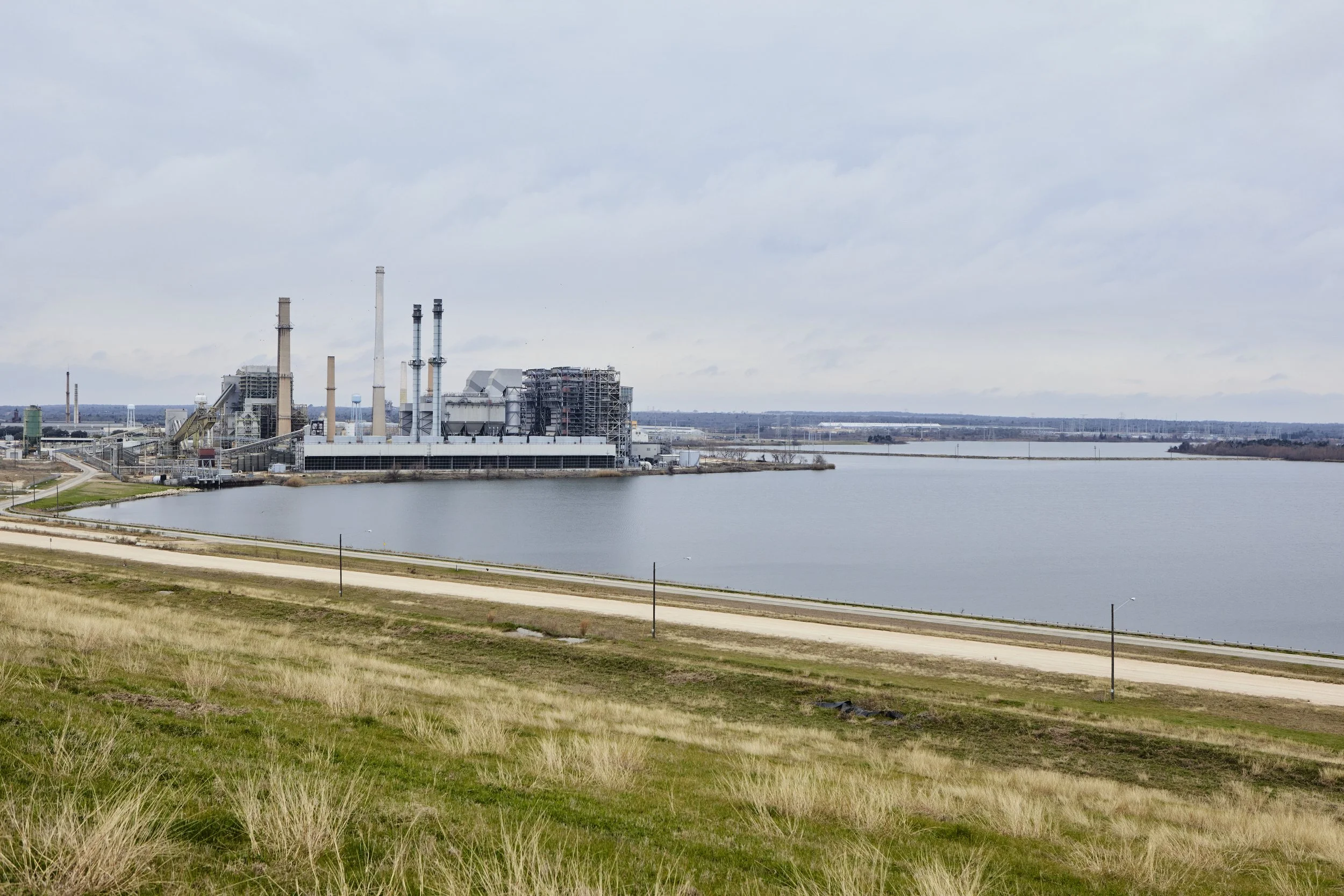In print and online at D CEO magazine, April 2024
Economic growth and shifts owing to the pandemic and geopolitics are driving the redevelopment of brownfield assets.
With Sandow Lakes, Xebec’s Randy Kendrick is leading the way…
(Note: Many resources, efforts and people came together over many years to allow for this tale to be told. I am grateful for all of them.)
Reusing Industrial Bits (A deleted ‘scene’ sidebar)
As we toured the gritty-cool aluminum smelter, a long series of industrial fans, roughly 30-feet in diameter, lay on the floor. The fans, waist-high to Kendrick, were formerly evaporative cooling tower fans from power station No. 5. The height of the old plant’s ‘super-structure,’ as Kendrick calls it, was 150 feet high. The fans are to be converted to ceiling fans for a creators campus. With the young chocolate lab Dakota, Sandow’s mascot, we also strolled past a massive industrial-sized claw, terrifyingly hanging from the ceiling, that was formerly used to handle massive 1000-pound electric anodes as part of the smelting process.
The entire hollowed-out reuse space, of former aluminum anode processing, was roughly 500 acres of steel, rebar and concrete. As the tour continued outside of power island, every now and then, Kendrick and I passed other plant equipment. Outside the industrial enterprise zone, giant-sized rusty bucket ski lift-looking parts (about 35-feet tall) sat neatly in a row for their future circular economy reuse. These mining buckets weigh 350 tons, and in a single “bite”, can move dirt the size of an Olympic-size swimming pool (350 cubic yards).
The sheer volume of bits, industrial body parts, equipment and space was countless—but all with some creative future purpose, reinventions ahead in Kendrick’s mind.
From a deleted scene from the April, 2024 D CEO feature, the constraints of print, the beauty of print.
GALLERY
Overview of D CEO feature at 10:48
For an Austin investor conference, energy viewpoints are offered, alongside my natural capital work and the preview of the reindustrialization Texas-style story.
Below is a background interview with Landman Jonathan Grammer in late December discussing Texas’ land dynamics.
Circular Economy Sandow
Interview with Landman Jonathan Grammer
The Sandow Lakes Ranch development stands as a model of sustainable development but also reflects the shifts occurring across the globe to accommodate technology and innovation. The need of the day points to multidisciplinary approaches and non-waste. Adding advanced manufacturing and reindustrializing means creating space for the new with the old in mind. Kendrick mentioned that we’ve really only been collecting the large quantities of data in the last five years. Importantly, the carrying capacity of the land and its resources are limiting factors—always was, always will be.
Given the economic growth in the Texas Triangle area, landman and carbon capture expert Jonathan Grammer observed how the availability of relatively large, flat, affordable parcels inspired the Samsungs and Teslas to move to Texas. Once-classified as farmland, this region’s access to infrastructure and other business factors played a role, of course. His profession has morphed along with the dynamic changes in the Texas economy and uses of land. Sandow’s sheer size will allow for Kendrick’s vision beyond commercial uses, that also includes housing, of which that area is short. The Woodlands, about 30 miles outside of Houston, is an example, but this is different, with different frontiers ahead.
The Sandow difference is the mindfulness and meticulous attention to details of the environment, honoring the histories and allowing for creative, next-gen growth —“one brick at a time,” Kendrick says—knowing it’s a 20-25 year development task.
(From print version sidebar (original draft)
Deleted quotes I like
““Developers make something out of nothing,” Kendrick offers. But that’s not all.
The pandemic reshuffled the global economic deck in new ways. It was kerosene poured onto the fire for an American manufacturing renaissance. In Texas, it’s looking like reindustrialization Texas-style.
”
““Kendrick is taking his vision of something that looked like Chernobyl to absolute clarity,” Uechtritz emphasized.”
Ancestral note: I used to shoot photos of vanishing, decrepit railroad tracks and houses outside of a town in East Texas, in the black, rich agricultural lands. No wonder this all resonated…























